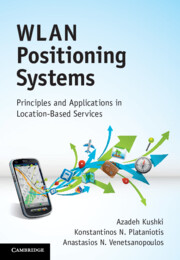Preface
Published online by Cambridge University Press: 05 February 2012
Summary
For thousands of years, location information has been used for navigation. This has changed in the last century as advances in wireless communication and microelectronics have given birth to mobile computing devices. These devices enable their users to access sensing and computing capabilities from anywhere and at any time. An important consequence of such mobility is that the resource and information needs of wireless users are no longer fixed but vary with their changing location and, more generally, with their changing context. This has sparked a new generation of applications that employ location information to cater to the changing needs of mobile users. These applications, known as location-based services (LBS), are offered on top of wireless communication infrastructures to add value to existing services.
To enable and support the delivery of LBS, accurate, reliable, and realtime user location information is needed. This need has incited a new interest in positioning and tracking systems whose aim is to determine the physical coordinates of a wireless mobile device carried by a human user. The focus of this book is one class of positioning systems that employ radio signals from wireless local area networks (WLAN) for positioning. These systems are of special interest as they are able to provide high positioning accuracies in indoor and outdoor environments with minimal deployment and maintenance costs.
This book is divided into two parts. The first part focuses on topics related to the history and applications of positioning systems.
- Type
- Chapter
- Information
- WLAN Positioning SystemsPrinciples and Applications in Location-Based Services, pp. xi - xiiPublisher: Cambridge University PressPrint publication year: 2012



